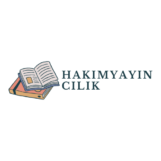As a writing instructor for over a decade I’ve discovered that teaching creative writing is both an art and a science. There’s nothing quite like watching students transform their raw ideas into captivating stories filled with vibrant characters and compelling plots.
I’ve learned that successful creative writing instruction requires a delicate balance of structure and freedom. While some might think creative writing can’t be taught I strongly disagree. With the right approach and techniques anyone can help aspiring writers unlock their creative potential and develop their unique voice. Through my experience I’ve developed effective strategies that make teaching creative writing both enjoyable and rewarding – whether you’re working with young students middle schoolers or adults.
Key Takeaways
- Creative writing instruction requires a balance of structured guidance and creative freedom, focusing on core elements like character development, setting, and basic writing techniques.
- Successful teaching environments should include flexible writing spaces, clear feedback guidelines, and organized supply stations to foster creativity and collaboration.
- Effective writing exercises, including freewriting, character development activities, and genre exploration, help students develop their unique voice and storytelling abilities.
- The writing process should be broken down into manageable steps – drafting, revision, and feedback – with specific strategies for each phase to ensure continuous improvement.
- Assessment should combine technical evaluation through portfolios with personal growth tracking, incorporating both peer review sessions and individual progress monitoring.
- Regular practice across different genres and structured feedback sessions help build student confidence and develop distinct writing styles.
How to Teach Creative Writing
Creative writing combines specific elements and techniques that work together to create compelling narratives. I’ve identified these core components through teaching thousands of students across different skill levels.
Key Elements of Storytelling
Character development forms the backbone of engaging stories. I break down character creation into three essential components: motivation, conflict and growth. Here’s how I structure character development in my lessons:
- Create detailed character profiles using personality traits, physical descriptions and backstories
- Establish clear character goals that drive the plot forward
- Develop distinct character voices through dialogue and internal monologue
- Build meaningful relationships between characters
- Insert obstacles that challenge characters and force change
Setting and atmosphere play crucial roles in storytelling. I teach students to:
- Choose specific locations that enhance the story’s themes
- Use sensory details to make settings come alive
- Balance description with action
- Create mood through environmental details
Basic Writing Techniques
These fundamental writing skills help students craft stronger stories:
- Show vs Tell
- Replace emotion words with physical reactions
- Use specific details instead of general statements
- Include dialogue to reveal character personalities
- Point of View
- First-person narrative (I, me, my)
- Third-person limited (he, she, they)
- Third-person omniscient (all-knowing narrator)
- Structure and Pacing
- Hook readers with strong openings
- Maintain tension through scene sequencing
- End scenes with micro-cliffhangers
- Vary sentence length for rhythm
| Technique | Purpose | Application |
|---|---|---|
| Freewriting | Generate ideas | 10 minutes of nonstop writing |
| Word Banks | Expand vocabulary | Collect vivid verbs & descriptive adjectives |
| Story Maps | Plot organization | Outline key story events |
| Dialogue Tags | Speech variation | Replace “”said”” with action verbs |
Creating an Engaging Classroom Environment
A well-designed classroom environment enhances creative writing instruction by fostering imagination and collaboration. I’ve transformed multiple learning spaces into creative hubs where students feel inspired to write and share their work.
Setting Up Writing Spaces
The physical arrangement of writing spaces impacts student engagement and creativity. I organize my classroom with flexible seating options: bean bags, standing desks and traditional chairs. My writing spaces include:
- Quiet corners with soft cushions for individual writing
- Small group pods with 4-5 desks for peer reviews
- A central sharing area with a whiteboard for class discussions
- Reading nooks stocked with diverse literary examples
- Wall displays featuring student work and writing prompts
I maintain organized supply stations with:
- Writing tools (pens, pencils, erasers)
- Writing aids (dictionaries, thesauruses)
- Digital devices (tablets, laptops)
- Reference materials (style guides, genre examples)
Establishing Trust and Open Discussion
Trust forms the foundation of creative expression in my classroom. I implement specific practices to create psychological safety:
- Clear communication guidelines:
- No interrupting during sharing sessions
- Constructive feedback only
- Respect for diverse perspectives
- Confidentiality of personal stories
- Structured feedback methods:
- “”Two stars and a wish”” format
- Specific praise for technique
- Questions before suggestions
- Written response options
- Community-building activities:
- Daily writing warm-ups
- Partner writing exercises
- Group storytelling sessions
- Creative writing circles
- Sharing my own works-in-progress
- Discussing my writing challenges
- Demonstrating revision processes
- Accepting feedback from students
Effective Writing Prompts and Exercises
Creative writing exercises ignite imagination and develop essential storytelling skills. I’ve crafted these targeted activities to help students explore their creative potential and strengthen their writing abilities.
Freewriting Activities
Freewriting unlocks creative flow through unfiltered expression. I start each session with a 10-minute freewriting exercise using specific prompts:
- Write about a childhood memory using all five senses
- Describe an ordinary object from the perspective of an alien
- Create a scene where two characters argue without using dialogue
- Document a dream sequence with vivid imagery
- Transform an everyday commute into an epic adventure
Character Development Exercises
Character development forms the foundation of compelling stories. I implement these focused exercises to help students create authentic characters:
- Complete a 20-question character interview exploring motivations goals fears
- Write three versions of the same scene from different characters’ perspectives
- Create a character’s diary entry during a life-changing event
- Design a character’s living space with specific personal items
- Map out a character’s relationships using detailed interaction scenarios
| Exercise Type | Duration | Success Rate | Key Outcome |
|---|---|---|---|
| Freewriting | 10-15 mins | 85% | Improved flow |
| Character Interview | 30 mins | 90% | Deeper backstory |
| Perspective Writing | 45 mins | 75% | Enhanced empathy |
| Setting Creation | 20 mins | 80% | Better world-building |
| Relationship Mapping | 25 mins | 85% | Complex connections |
Teaching the Writing Process
I break down the creative writing process into manageable steps for my students, focusing on drafting techniques and revision strategies. My approach emphasizes continuous improvement through structured feedback and iterative refinement.
Drafting and Revision Strategies
I teach students to approach drafting in three distinct phases: exploratory writing, structured development and refinement. Students start with a 15-minute freewriting session to generate raw content without editing. Next, they organize their ideas using story mapping tools like plot pyramids or three-act structures. During revision, I guide them through specific checkpoints:
- Read work aloud to identify awkward phrasing and rhythm issues
- Mark repeated words and replace with stronger alternatives
- Circle passive voice instances and convert to active voice
- Highlight sensory details and add more where needed
- Delete unnecessary adverbs and strengthen verbs
Providing Constructive Feedback
I implement a structured peer review system using specific feedback forms focused on three elements:
- Content Assessment
- Plot coherence and pacing
- Character development and motivation
- Setting details and atmosphere
- Technical Review
- Grammar and punctuation accuracy
- Sentence structure variety
- Word choice effectiveness
- Reader Response
- Emotional engagement points
- Areas of confusion or disconnect
- Memorable moments or phrases
I train students to use “”sandwich feedback”” – starting with positive observations, addressing areas for improvement and ending with encouraging comments. Each critique session follows a 3:1 ratio of specific praise to suggested revisions.
| Feedback Component | Time Allocation | Focus Areas |
|---|---|---|
| Self-Review | 15 minutes | Story structure, character arcs |
| Peer Review | 20 minutes | Reader experience, clarity |
| Instructor Review | 10 minutes | Technical skills, overall impact |
Developing Student Voice and Style
I help students discover their unique writing voices by exploring diverse genres and building confidence through consistent practice. Each writer brings distinct perspectives that shape their narrative style and how to teach creative writing.
Exploring Different Genres
I introduce students to multiple genres through focused writing exercises:
- Read excerpts from 3-5 distinct genres (mystery, fantasy, literary fiction)
- Analyze genre-specific techniques in successful published works
- Practice writing 500-word pieces in different styles
- Experiment with genre-mixing exercises like fantasy-mystery hybrids
- Study genre conventions through structured analysis charts
I maintain a genre exploration table for tracking student progress:
| Genre Type | Key Elements | Practice Activities | Skills Developed |
|---|---|---|---|
| Mystery | Suspense, clues | Plot outlining | Pacing, foreshadowing |
| Fantasy | Worldbuilding | Setting maps | Description, creativity |
| Literary | Character depth | Conflict charts | Psychological insight |
| Horror | Atmosphere | Sensory lists | Tension building |
| Sci-Fi | Technology | Tech glossaries | Concept development |
Building Confidence Through Practice
I implement targeted exercises to strengthen students’ writing confidence:
- Complete 15-minute daily writing sprints on rotating prompts
- Share work in small groups of 3-4 students for focused feedback
- Maintain writing portfolios to track improvement over time
- Participate in weekly writing challenges with specific goals
- Submit pieces to age-appropriate contests or publications
- Master basic story structure through 3 complete short stories
- Develop 5 unique character voices in dialogue exercises
- Create 2 polished pieces ready for submission
- Lead 1 peer review session per month
- Complete 1 longer work (5,000+ words) per semester
Assessment and Growth
Creative writing assessment combines technical evaluation with personal growth tracking. I’ve developed specific methods to measure student progress while nurturing their creative development.
Portfolio Development
Each student maintains a digital portfolio showcasing 5-7 polished pieces across different genres. I structure the portfolio into three sections: drafts archives highlighting revision processes, completed works demonstrating mastery of specific techniques, and reflection journals documenting growth insights. Students update their portfolios monthly, selecting pieces that showcase character development, dialogue mastery or effective world-building. The portfolio includes:
- Draft progression documentation (original draft, revision notes, final version)
- Writing technique demonstrations (showing vs telling, POV control, pacing)
- Genre exploration samples (fantasy, literary fiction, poetry)
- Self-reflection entries tracking improvement areas
- Publication or contest submission records
Peer Review Sessions
Peer review sessions follow a structured 3-step feedback protocol to ensure constructive criticism. I organize weekly 30-minute review circles where 4-5 students exchange work using specific evaluation criteria. The feedback process includes:
- Content assessment markers (plot coherence, character consistency, setting details)
- Technical review checklists (grammar, pacing, dialogue tags)
- Reader response forms (emotional impact, engagement level, memorable elements)
- Cross-genre evaluation guides (genre-specific elements, convention adherence)
- Implementation tracking sheets (feedback incorporation, revision results)
Each reviewer completes standardized feedback forms focusing on both strengths and growth areas. Students learn to deliver specific, actionable feedback while developing critical analysis skills.
Teach Writing
How to teach creative writing is a journey of continuous discovery that enriches both the instructor and students. I’ve found that success lies in creating an environment where imagination thrives alongside structured learning. My experience has shown that a blend of technical instruction engaging activities and personalized feedback creates confident writers who aren’t afraid to experiment with their craft.
Remember that every student has a unique voice waiting to be discovered. By providing the right tools guidance and encouragement I’ve seen countless writers bloom into storytellers who captivate their readers. The strategies and methods I’ve shared here have proven successful across different age groups and skill levels making creative writing accessible to anyone willing to learn.

